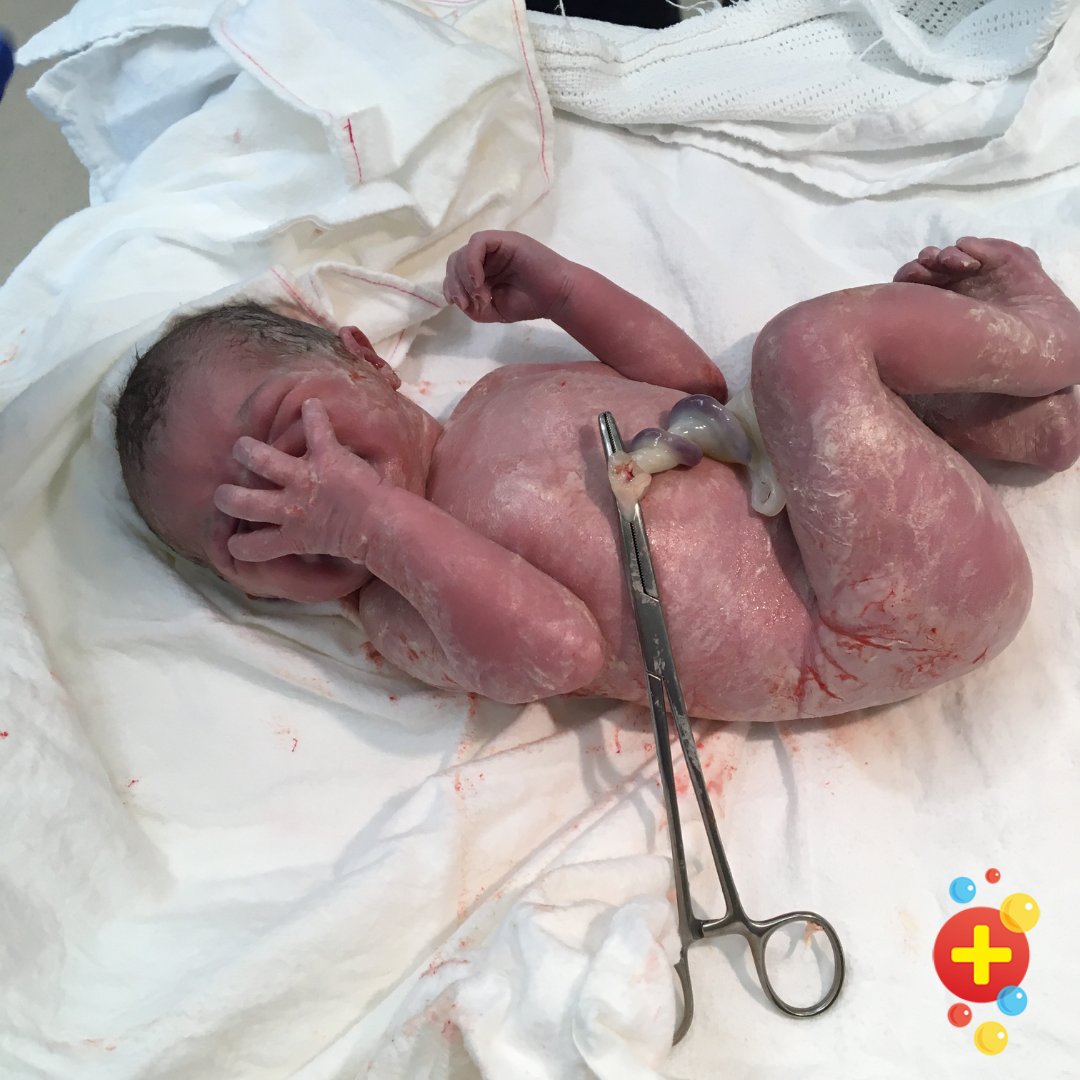Umbilical cords – we all had one once.
In neonates they cause a myriad of potential problems – sticky, discharging, smelly, pink, lumpy, protruding,
Do you know what’s what when it comes to cord problems?
A thread:
(See https://dontforgetthebubbles.com/the-normal-neonate-navel-gazing/ + http://DFTBSkinDeep.com )
1/9
In neonates they cause a myriad of potential problems – sticky, discharging, smelly, pink, lumpy, protruding,
Do you know what’s what when it comes to cord problems?
A thread:
(See https://dontforgetthebubbles.com/the-normal-neonate-navel-gazing/ + http://DFTBSkinDeep.com )
1/9
The cord starts off life as the yolk stalk, containing the vitelline duct, fused to the body stalk containing a pair of umbilical arteries, a single umbilical vein + the allantois. The vitelline duct obliterates around week 8 of fetal life.
Single artery is a common variant
2/9
Single artery is a common variant
2/9
A normal cord  is the colour of freshly cooked calamari. It might be a bit green due to meconium staining. It will dry up + drop off around Day 8. Be careful with delayed cord separation – increased risk of omphalitis + immune disorders e.g. leukocyte adhesion deficiency
is the colour of freshly cooked calamari. It might be a bit green due to meconium staining. It will dry up + drop off around Day 8. Be careful with delayed cord separation – increased risk of omphalitis + immune disorders e.g. leukocyte adhesion deficiency
3/9
 is the colour of freshly cooked calamari. It might be a bit green due to meconium staining. It will dry up + drop off around Day 8. Be careful with delayed cord separation – increased risk of omphalitis + immune disorders e.g. leukocyte adhesion deficiency
is the colour of freshly cooked calamari. It might be a bit green due to meconium staining. It will dry up + drop off around Day 8. Be careful with delayed cord separation – increased risk of omphalitis + immune disorders e.g. leukocyte adhesion deficiency3/9
Then the cord dries up + falls off. It can be smelly, and can have a bit of discharge. It’s flesh that’s dying + falling off the body – it’s a mucky process.
Often they just need a gentle clean with gauze and water.
4/9
Often they just need a gentle clean with gauze and water.
4/9
We worry about omphalitis. This isn’t common. The skin around the cord on the abdomen gets red and angry looking. The stump is a good breeding ground for bacteria. Most commonly caused by Staph, Strep, and E. coli.
Babies can become very sick and need IV antibiotics.
5/9
Babies can become very sick and need IV antibiotics.
5/9
Granulomas are very common. Small lumps of umbilical tissue that remain after cord separation. Pink, raw, moist.
Commonly they bleed when rubbed by the nappy.
Treatment is with silver nitrate or salt.
https://www.ruh.nhs.uk/patients/patients_leaflets/paediatrics/Umbilical_Granuloma_patient_info.pdf
6/9
Commonly they bleed when rubbed by the nappy.
Treatment is with silver nitrate or salt.
https://www.ruh.nhs.uk/patients/patients_leaflets/paediatrics/Umbilical_Granuloma_patient_info.pdf
6/9
Keep an eye out for vitellointestinal or urachal ducts. These are duct remnants with a sinus/communication.
A ‘granuloma’ not resolving with treatment, one that looks different from normal granulomas, or if it’s discharging urine or serious fluid – consider a duct remnant
7/9
A ‘granuloma’ not resolving with treatment, one that looks different from normal granulomas, or if it’s discharging urine or serious fluid – consider a duct remnant
7/9
Umbilical hernias are common: more so in premature babies + those with Trisomy 21. It’s normally painless but it’s more noticeable when the child cries.
Most close spontaneously. The larger ones are less likely to close + may need surgery. It’s rare they become incarcerated
8/9
Most close spontaneously. The larger ones are less likely to close + may need surgery. It’s rare they become incarcerated
8/9
Cords are a beautiful marker of the start of life.
Most are completely normal and will drop off and be quickly forgotten.
Know what's normal and what's not
See more here:
https://dontforgetthebubbles.com/the-normal-neonate-navel-gazing/
9/9
Most are completely normal and will drop off and be quickly forgotten.
Know what's normal and what's not
See more here:
https://dontforgetthebubbles.com/the-normal-neonate-navel-gazing/
9/9

 Read on Twitter
Read on Twitter










